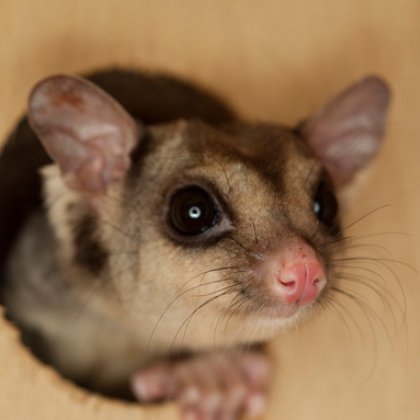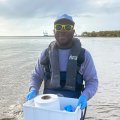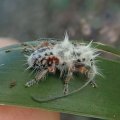
They may be voted cutest on campus, but some of the critters gaining attention at Gatton are having trouble in the real world.
The University of Queensland is housing three endangered marsupial species at the Gatton campus – the Julia Creek Dunnart, the Mahogany Glider and the Bridled Nailtail Wallaby – all facing their own struggles to survive.
The species are maintained at the Native Wildlife Teaching and Research Facility.
School of Agriculture and Food Sciences Associate Professor Peter Murray says the three cute-looking species are attracting a lot of attention for their very quirky personalities, but that much work must be done to ensure they flourish.
Next year, the team is looking to capture more dunnarts to help with their breeding program.
The Native Wildlife Teaching and Research Facility maintains the only captive colony of the Julia Creek Dunnart.
The Julia Creek Dunnart has suffered from predation by introduced cats and foxes and usually only breed between the ages of 5 to18 months of age.
“They live about two to three years and if they don’t breed, the population can crash,” said Professor Murray.
"The dunnart is about the size of a big mouse, cute but ferocious and able to draw blood.
“If you put your hand into the cage they bite. They latch on and keep biting. They are really interesting animals to work with because they have personality.”
Capturing wild Julia Creek dunnarts is another challenge, as the success rate is 0.01 per cent, although the wildlife science team is working on a new bait to specifically attract this species.
In captivity, male and female Julia Creek dunnarts must be kept apart because they have an aggressive nature and are only placed together when the female shows signs of being on heat (characterised by running up to 30km per night on a running wheel).
“We are still learning lots about these animals that you wouldn’t know unless you had them in captivity. None of the Julia Creek Dunnarts had been filmed giving birth, but we are now drafting a paper because is the first animal known to do a forward somersault to give birth,” he said.
A colony of Fat-tailed Dunnarts has recently been added to the collection of native wildlife species as a research model for marsupial development.
Also kept on campus are Mahogany Gliders, which are able to leap 20 metres under the right circumstances. A post-doctoral fellow Dr Megan Brady is looking at putting up poles on either side of roads in north Queensland to make it safer for this species to cross.
Also ferocious and able to bite to the bone, the less friendly gliders must be handled with gloves and housed according to an established hierarchy.
Thanks to cameras set up in Mahogany Glider enclosures, footage of birth, maternal and paternal behaviour and grooming have been captured, “most of which we don’t know much about”, said Professor Murray.
The Native Wildlife Facility is one of five breeding centres in Australia for this species.
The third endangered species within the Facility is the Bridled Nailtail Wallaby. The species was thought to be extinct in the early 1970s. With the assistance of the public, small populations of the Bridled Nailtail Wallaby were rediscovered. This wallaby requires long grass and thickets to avoid predation.
Although an attractive animal, these wallabies regularly eat food and throw some of it up on the ground and then re-eat it. This is just one of the quirks that researchers are currently working to understand.
Professor Murray said the research was continuing and ultimately hoped to expand the Wildlife Facility to allow a wider range of animals and research to be undertaken.
Download high resolution images here.
Media: Janelle Kirkland, UQ Communications (07 3346 0561 or j.kirkland@uq.edu.au)












